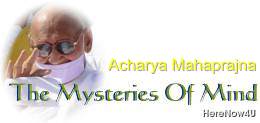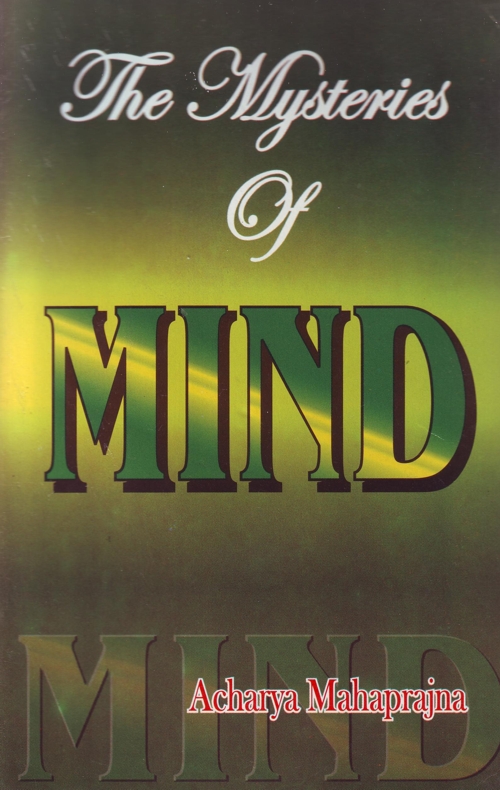
Mental powers are aroused by training and practice; of course, the practice has to be correct and prolonged. There are thousands of methods of arousing the dormant powers of the mind. One may choose any method one likes. A practitioner decided to switch on and switch off electric light in a bulb with the help of mental powers. He practised and his will power became so strong that he succeeded. Anyhow, such powers have no spiritual value. One can do good as well as bad to others without any physical aid but only with the aid of his mental powers. He exerts himself and succeeds.
An ascetic once went to beg food. He entered a house. The lady of the house gave a cold shoulder to him. The ascetic became enraged and cursed the lady saying, "Go, be burnt into ashes." The lady retorted with a smile, "I am a hard nut to crack. I am a devoted wife and your curse will have no effect on me. The mental powers of a devoted wife are far stronger than those you possess."
There was an archer renowned for his archery. His achievements went into his head and he began to boast of them before a friend who advised him to meet his guru. The former went to the guru. The guru took him to the top of a hill. A flock of birds was flying high up in the sky. The guru said to the archer, "See. I will show to you my powers." He then showed to the archer his feat in Animesa preksa (gazing at an object without twinkling the eyes). He gazed at the birds for some time and all the birds fell dead on the earth. Through Animesa preksa you can down flying birds and stop moving heavy vehicles. Anyhow, these are not examples of the application of spiritual powers. They are examples of the application of mental powers only. Even the spiritual practitioners need the powers of the mind but for other purposes. But in both cases the method and process of arousing mental energy remain the same. The only difference is that the purposes for which it is aroused are different. The spiritual practitioner walks on a different path where impurity of heart, speech and body find no place.
The practice of arousing mental powers is not a complicated practice. However, certain conditions have to be fulfilled The first condition is the relaxation of the body. This is called kayotsarga without which mental energy cannot be aroused. No energy can be aroused in a state of physical tension. A tense mind and a tense body are hindrances in the manifestation of mental energy. Relaxation of the body means the subduing of emotions and impulses which obstruct the manifestation of mental energy. The second condition is to stop the waste of energy. Usually every one of us wastes energy. We go on thinking on one thing or the other even when it is not necessary. The brain does not get even a minute's rest. It works even during sleep. It is active in dreams. This is a tremendous waste of energy.
The mind is always active. It does not stand still. The body too does not remain without activity. If one sits in a particular posture several parts of the body begin to ache. We are not accustomed to remaining stable. We believe that there will be no development of the mind if the body and speech did not remain active and that activity alone gives us strength. This is a complete reversal of truth. The truth, however, is that energy can be aroused only when the mind, body and speech are completely suspended. Energy cannot be aroused if they remained active. I do not plead that they should not be used at all. What I mean to say is that energy can be aroused if we used them the least.
Our nervous system has two parts. One of these is autonomous and the other is activated by forces other that itself. The autonomous part is the least used. It is the other, which is the most used. That is the reason why our energies lie dormant. The activated part, which is driven by the brain and the spinal cord, keep our energies dormant. When we control it and decrease its activity, the unconscious mind gets an opportunity to become active. Increasing the activity of the unconscious mind means the arousing of energy. In the course of our practice the spring of energy becomes active in the unconscious mind.
The third principle is to give a new direction or orientation to the vital breath. Once this new orientation has been brought about and a new direction has been given to it, the practitioner begins to move towards it. A new horizon is opened before him and he comes to know something, which he had never known before. By concentrating the mind and by giving a new turn to the breathing process the practitioner comes to have a direct knowledge of a new reality, which he did not have earlier. Concentration of the mind and a new channelization of the vital energy not only enable us to enter into new spatial realms but also to travel in time other than the present i.e. the past and the future. The practitioner can transcend the limitations imposed on him by time and space. It is for the practitioner to decide what exactly he wants to achieve. If his aim is very high, he will no longer be interested in small things.
 Acharya Mahaprajna
Acharya Mahaprajna

